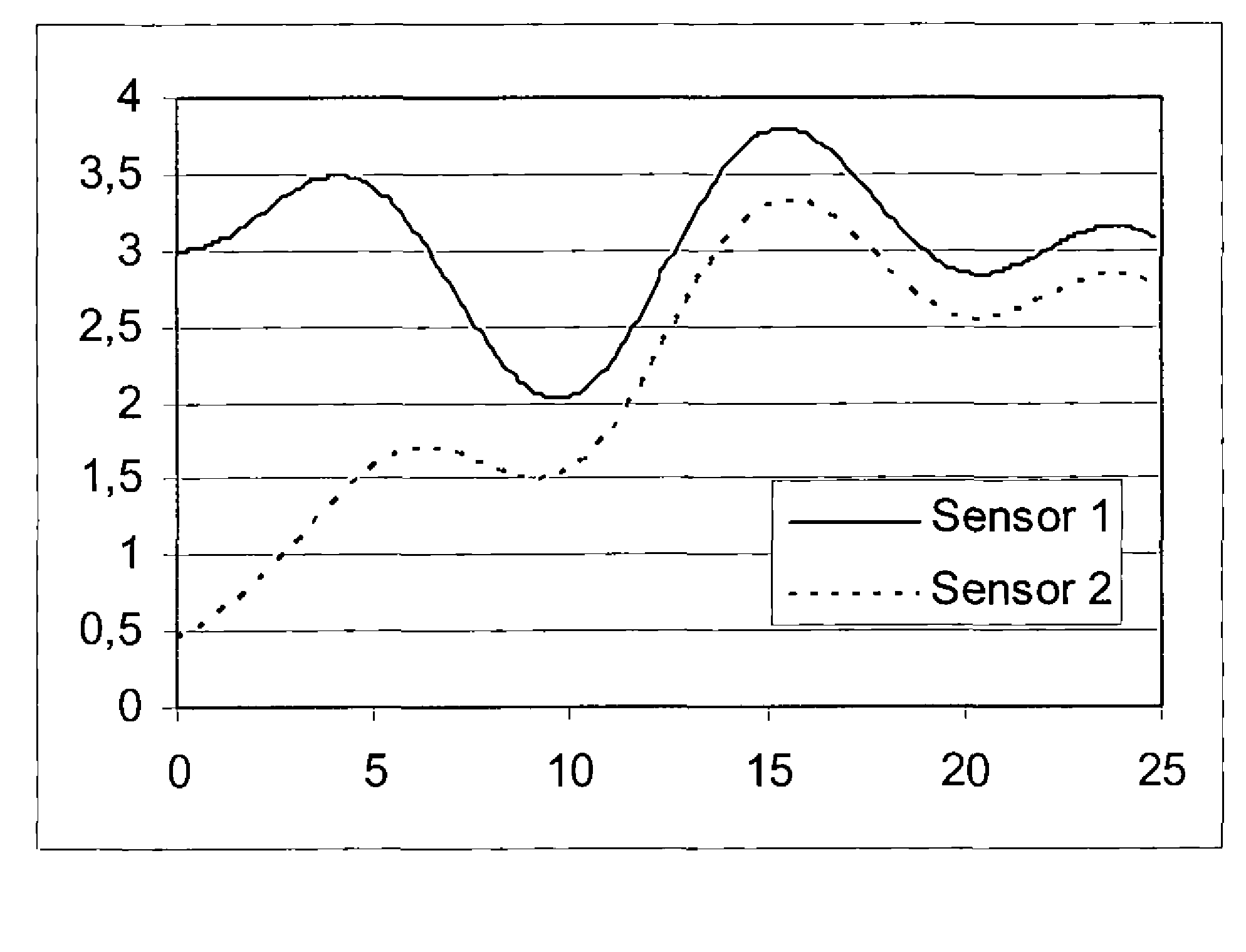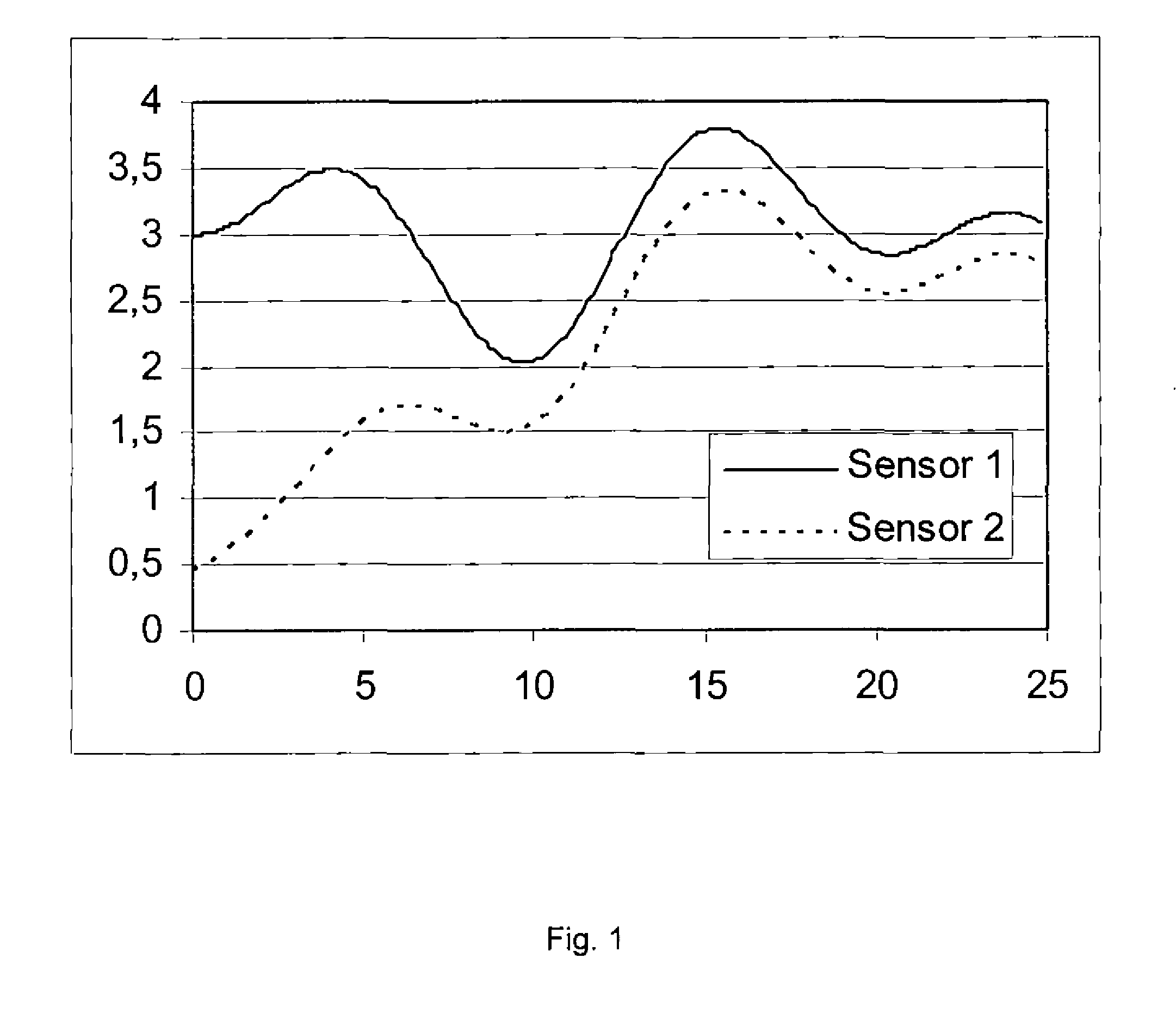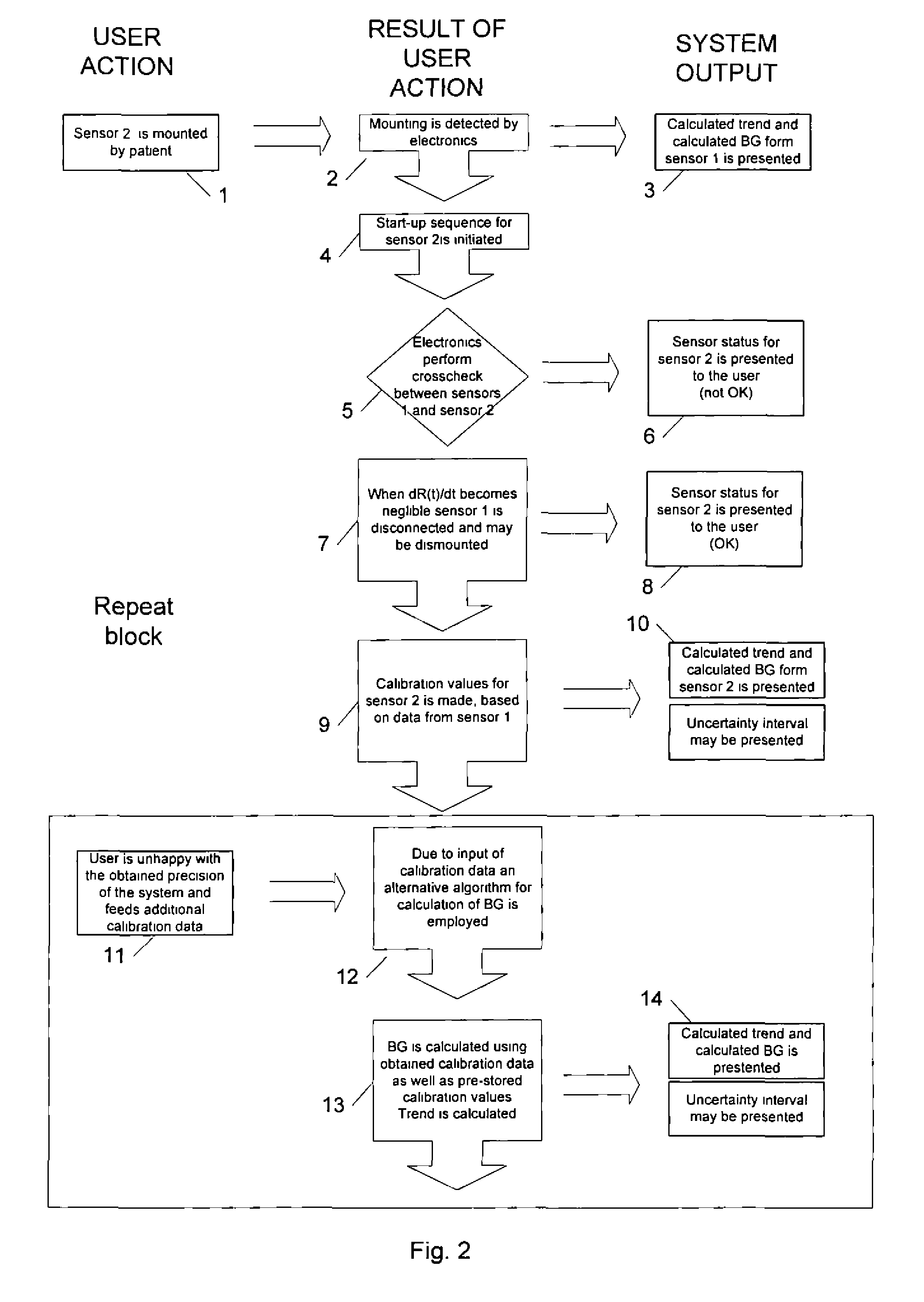Method of Calibrating a System for Measuring the Concentration of Substances in Body and an Apparatus for Exercising the Method
- Summary
- Abstract
- Description
- Claims
- Application Information
AI Technical Summary
Benefits of technology
Problems solved by technology
Method used
Image
Examples
Embodiment Construction
[0029]FIG. 1 shows sensor signals from a previously implanted sensor 1 and a sensor 2 which has just been implanted.
[0030]Sensor 1 is working during the whole time interval. At the time t=0 sensor 2 is mounted, Full correct signal is at time t=0 not received from sensor 1. This is first achieved at time=20.
[0031]Multiple methods may be employed to correlate the two sensor signals to each other.
[0032]According to one embodiment of the of the invention the ratio of the signal from the two sensors relative to each other is measured as
R(t)=S2(t)S1(t)
Where
[0033]S1(t) is the signal from sensor 1 and S2(t) is the signal from sensor 2
[0034]Sensor 1 and sensor 2 are carried simultaneously until the criteria
δR(t)δt≤ɛ
i.e. the ratio of the signals from sensor 1 and sensor 2 are constant. This situation is achieved approx. at time=20 in the figure.
[0035]At time=20 the value of BG read from sensor 1 can directly be used for calibration of sensor 2.
[0036]If a calibration using a strip measurement ...
PUM
 Login to View More
Login to View More Abstract
Description
Claims
Application Information
 Login to View More
Login to View More - Generate Ideas
- Intellectual Property
- Life Sciences
- Materials
- Tech Scout
- Unparalleled Data Quality
- Higher Quality Content
- 60% Fewer Hallucinations
Browse by: Latest US Patents, China's latest patents, Technical Efficacy Thesaurus, Application Domain, Technology Topic, Popular Technical Reports.
© 2025 PatSnap. All rights reserved.Legal|Privacy policy|Modern Slavery Act Transparency Statement|Sitemap|About US| Contact US: help@patsnap.com



